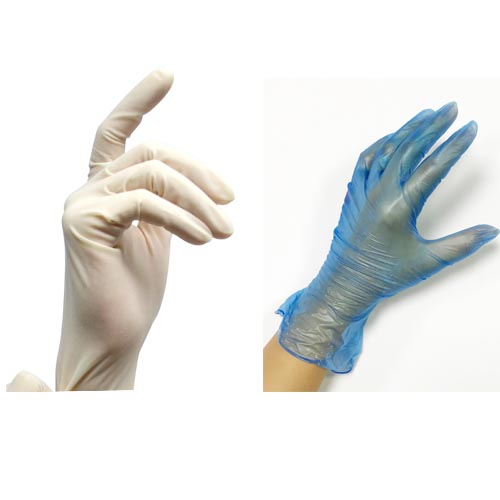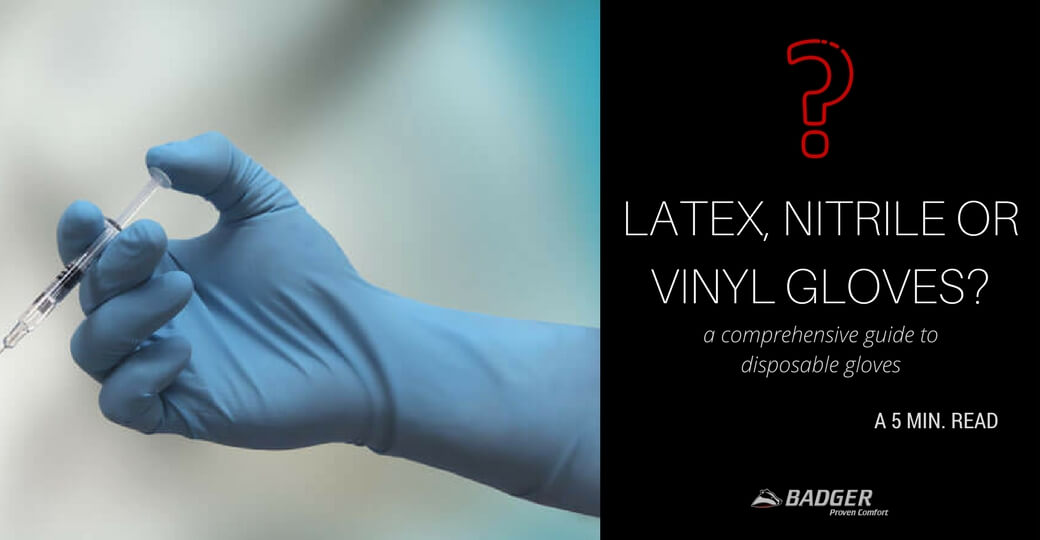They are looser fitting and generally used more in the food industry where durability and protection are not as important they are also a less expensive option.
Difference between vinyl and latex.
Vinyl gloves are great for basic hand protection in a low infection environment.
Are available in blue or black to help identify if the glove has been punctured.
Nitrile vs latex vs vinyl.
Latex unlike pvc cannot be stitched like a traditional fabric and seams are bonded the two surfaces to be bonded together are cleaned with a primer and then glueing the two surfaces together whilst the seams are very strong the downside to this process is the glues can fail and seams can come apart many latex garments also use a moulding process where a cast is dipped into liquid latex most notably this process is used in latex gloves and latex hoods where bonded seams would simply not be.
However many prefer to use higher end gloves such as nitrile gloves.
Are good for wearing an extended amount of time.
Great for people with latex allergies.
Nitrile gloves are often preferred since these non latex gloves best resemble the stretchy feel of latex gloves and are also highly durable and puncture resistant.
Looser and less durable than latex and nitrile vinyl gloves are a popular choice for situations where high levels of durability and protection are less of a priority.
Latex gloves have superior resistance to tear puncture and are also more waterproof because it is easier to control the level of microholes therefore safer for risk jobs eg with biological material.
Mold to your hand for a great fit.
Work well for high risk situations involving infectious material.
They are great for basic hand protection in a low infection environment.
Have a long shelf life.
Best for use with non hazardous materials vinyl makes a good multi purpose glove for general use.
The most economic option of the three if you are not concerned about increased durability or protection vinyl gloves are a great choice for you.
As you read on consider which attributes are most important for your place of work.
Nitrile and latex are two of the most common types of general use disposable gloves.
Best for use with non hazardous materials vinyl makes a good multi purpose glove for general use.
Vinyl gloves offer a different option to latex and nitrile.
Vinyl gloves are more suited for short term low risk tasks where cost is a factor.
Choose the best material for protecting your hands.
Little to no protection against chemicals and biohazards.
To compensate for decreased durability these gloves are far less expensive.
The newest option on the market is nitrile gloves or also known as buna n perbunan acrylonitrile butadiene rubber or nbr to scientists.
This latex free option offers a looser fit and are suited for low risk short term tasks.
Are most puncture resistant.
Latex gloves are made of natural rubber natural origin material from rubber tree while vinyl gloves are produced with raw synthetic materials mainly pvc poly vinyl chloride and phthalates dinp plasticizers that makes plastics soft and pliable.























